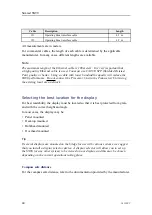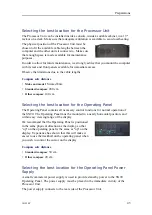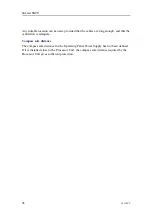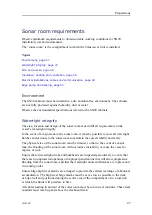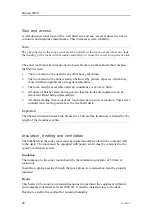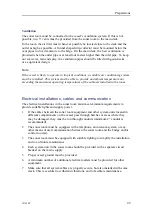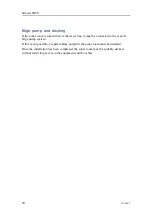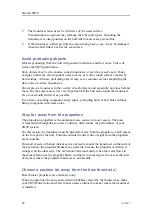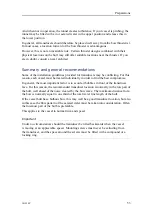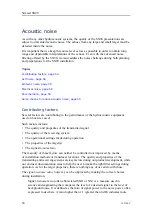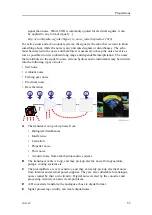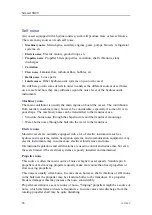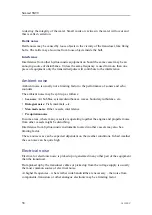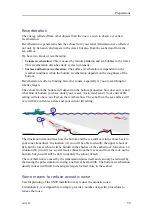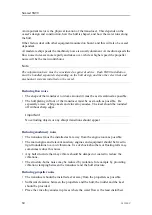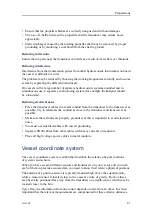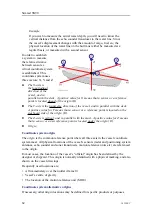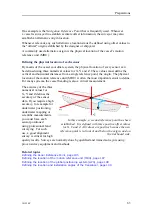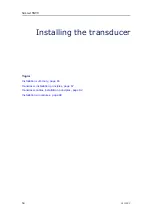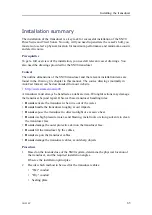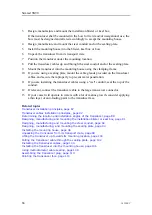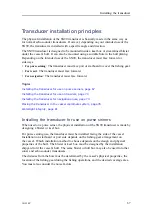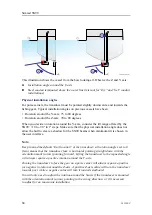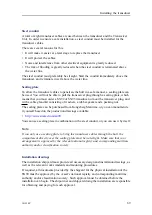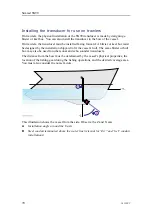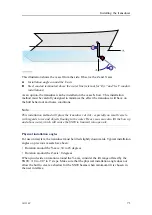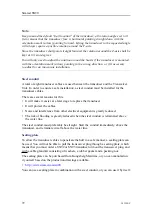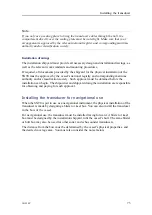
58
381298/C
to destroy the integrity of the water. Small voids or cavities in the water will occur and
this is called cavitation.
Rattle noises
Rattle noise may be caused by loose objects in the vicinity of the transducer, like fixing
bolts. The rattle may also come from loose objects inside the hull.
Interference
Interference from other hydroacoustic equipment on board the same vessel may be an
annoying source of disturbance. Unless the same frequency is used for more than one
piece of equipment only the transmitted pulse will contribute to the interference.
Ambient noise
Ambient noise is usually not a limiting factor to the performance of sonars and echo
sounders.
The ambient noise may be split up as follows:
•
Sea noise
: Air bubbles, seismic disturbances, waves, boundary turbulence, etc.
•
Biological noise
: Fish, mammals, etc.
•
Man made noise
: Other vessels, interference
•
Precipitation noise
In some areas, where many vessels are operating together the engine and propeller noise
from other vessels might be disturbing.
Interference from hydroacoustic instruments located in other vessels may also be a
limiting factor.
The sea noise is as can be expected dependent on the weather conditions. In bad weather
the sea noise can be quite high.
Electrical noise
Electrical or electronic noise is picked up or generated in any other part of the equipment
than the transducer.
Hum picked up by the transducer cables or picked up from the voltage supply is usually
the most common source of electrical noise.
At higher frequencies – where rather wide bandwidths are necessary – the noise from
components, transistors or other analogue electronic may be a limiting factor.
Simrad SN90
Summary of Contents for Simrad SN90
Page 2: ......
Page 117: ...381298 C 115 Related topics Installation summary page 65 Installing the transducer ...
Page 236: ...234 381298 C 372915 Clamping frame Simrad SN90 ...
Page 295: ......
Page 296: ... 2016Kongsberg Maritime ISBN 978 82 8066 179 1 ...
Page 297: ......

